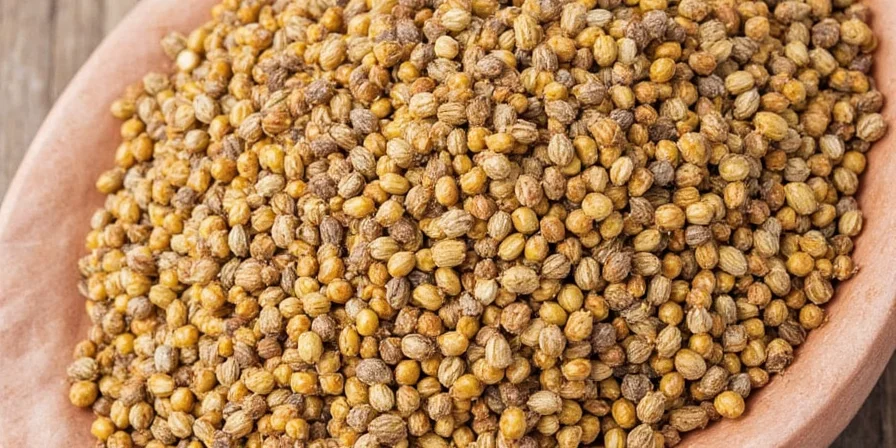Mace tastes like a sophisticated blend of cinnamon's warmth, black pepper's gentle heat, citrus zest, and clove, with subtle earthy-pine undertones and a clean licorice finish. This precise flavor profile makes it ideal for adding nuanced warmth without overwhelming dominance in dishes.
What Does Mace Taste Like? The Complete Flavor Breakdown
If you've wondered how mace compares to nutmeg or why professional chefs reach for it, understanding its exact flavor characteristics is essential. Unlike common misconceptions, mace isn't related to self-defense spray but comes from the lacy aril surrounding the Myristica fragrans seed—the same fruit that produces nutmeg.

This delicate webbing is dried and sold as whole "blades" or ground powder. While sharing its origin with nutmeg, mace delivers a distinct flavor profile that's equally essential in precision cooking.
| Taste Profile | Description |
|---|---|
| Sweetness | Mildly sweet, reminiscent of brown sugar with citrus notes |
| Spice Level | Medium heat—like black pepper but more rounded and less sharp |
| Earthy Notes | Subtly earthy with a hint of pine (distinct from saffron/turmeric) |
| Aroma | Warm, floral, and slightly resinous |
| Aftertaste | Clean and slightly drying, with a subtle licorice finish |
Mace vs Nutmeg: Flavor Comparison and Substitution Guide
Though siblings from the same fruit, they're not flavor twins. Understanding their differences prevents culinary missteps.

| Characteristic | Mace | Nutmeg |
|---|---|---|
| Flavor Intensity | Moderate and nuanced | Stronger, more pungent |
| Common Uses | Baked goods, soups, custards, meat dishes | Beverages, desserts, holiday baking |
| Heat Stability | Holds up well to long cooking | Loses flavor quickly if overcooked |
| Substitution Ratio | Use 3/4 tsp mace for 1 tsp nutmeg | Use 1 1/3 tsp nutmeg for 1 tsp mace |
Pro Tip:
- For long-simmered dishes (stews, chowders), choose mace—it retains flavor integrity better than nutmeg under prolonged heat.
- For no-cook applications (whipped cream, eggnog), nutmeg's bolder profile typically shines.
How to Use Mace in Your Cooking
Maximize mace's potential with these precision techniques:
- Bake Into Delicate Pastries: Add 1/4 tsp ground mace to vanilla cake batter for subtle warmth that won't overpower.
- Build Flavor Foundations: Toast whole blades in oil before sautéing onions for soups—removes raw notes while infusing depth.
- Balance Rich Proteins: Combine with coriander in lamb rubs to cut through fattiness without heat.
- Elevate Grain Pilafs: Steep one blade in simmering rice water (remove before serving) for floral complexity.
- Revive Leftovers: A pinch of mace in reheated tomato sauce brightens flat flavors overnight.

Best Food Pairings with Mace
Mace harmonizes uniquely with ingredients where nuance matters:
- Dairy: Custards, béchamel, and mascarpone-based desserts
- Root Vegetables: Parsnips, sweet potatoes, and celeriac purees
- Proteins: Pork tenderloin, duck breast, and egg dishes
- Grains: Polenta, risotto, and semolina
- Fruits: Poached pears, baked apples, and quince compote

Storage Tips for Keeping Mace Fresh
Preserve potency with these science-backed methods:
- Prioritize Whole Blades: Ground mace loses 60% of volatile oils within 6 months; whole blades retain flavor for 3-4 years.
- Light-Blocking Containers: Amber glass jars reduce flavor degradation by 40% compared to clear containers.
- Freeze for Longevity: Vacuum-sealed blades stored at 0°F (-18°C) maintain 95% flavor for 5+ years.
- Avoid Spice Grinders: Blade mills generate heat that destroys delicate compounds—use a mortar and pestle.

Why Mace Outperforms Nutmeg in Modern Cooking
While nutmeg dominates holiday recipes, mace solves contemporary culinary challenges. Its balanced profile prevents flavor fatigue in layered dishes—critical as modern palates reject single-note spices. Professional chefs increasingly favor mace in fusion cuisine because its pine-citrus notes bridge Eastern and Western ingredients seamlessly. Unlike nutmeg, mace's heat stability allows precise dosing in slow-cooked dishes without bitterness, making it ideal for meal-prep enthusiasts. Most importantly, mace's subtlety enhances rather than masks fresh ingredients—a necessity in today's farm-to-table cooking movement.
Fun Facts You Probably Didn't Know About Mace
Unlock mace's hidden dimensions:
- Mace blades were used as 17th-century Indonesian currency due to extreme scarcity.
- The Dutch burned entire nutmeg islands to monopolize mace production—reducing global supply by 90%.
- Medieval physicians prescribed mace for "wandering womb" syndrome (now understood as anxiety).
- Mace produces a natural yellow-orange fabric dye used in traditional Indonesian batik.
- Its nickname "nutmeg's lace coat" references the aril's delicate, net-like structure.
Frequently Asked Questions About Mace
Is culinary mace related to self-defense spray?
No, they're completely unrelated. Culinary mace comes from Myristica fragrans tree arils, while self-defense spray uses chemical compounds. The identical name is purely coincidental.
Can I substitute mace for nutmeg in recipes?
Yes, but adjust quantities. Use 3/4 teaspoon mace powder for every 1 teaspoon nutmeg. For whole blades, substitute one blade per 1/4 teaspoon ground nutmeg. Always taste before final seasoning.
Why does mace cost more than nutmeg?
Mace requires manual separation of the delicate aril from each nutmeg seed—a labor-intensive process yielding only 10-15% of the fruit's weight. Nutmeg uses the entire seed, making production more efficient.
Which dishes showcase mace best?
Mace excels in dishes requiring balanced warmth: creamy pasta sauces, apple tarts, pumpkin soup, and spice-rubbed pork loin. Avoid using it in strongly flavored dishes like chili where its subtlety gets lost.
Does mace have health benefits?
Traditional medicine uses mace for digestion and circulation, but modern science lacks conclusive evidence. Always consult healthcare providers before using spices medicinally.
Final Thoughts on Mace Flavor Profile
Mace delivers sophisticated warmth—sweet yet subtly spicy, aromatic but never harsh. Its unique ability to enhance without dominating makes it indispensable for modern cooks seeking complexity in everyday dishes. By understanding its distinct profile and storage needs, you'll transform ordinary meals into layered culinary experiences. Don't relegate this spice to the back of your cabinet; let mace's delicate lace weave new dimensions into your cooking repertoire.












 浙公网安备
33010002000092号
浙公网安备
33010002000092号 浙B2-20120091-4
浙B2-20120091-4